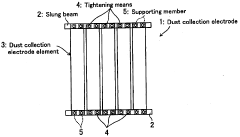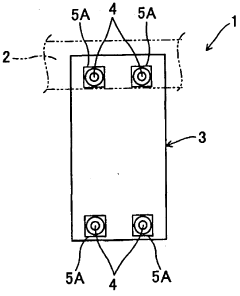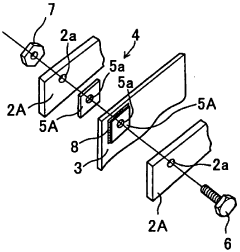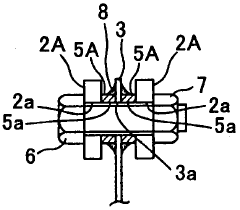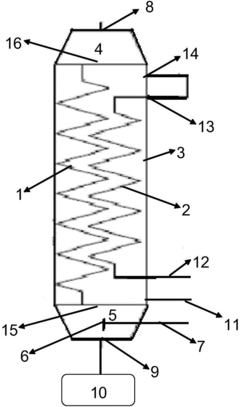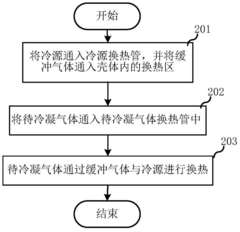Hastelloy Applications for Reducing Environmental Impact
JUL 10, 20259 MIN READ
Generate Your Research Report Instantly with AI Agent
Patsnap Eureka helps you evaluate technical feasibility & market potential.
Hastelloy Eco-Applications Background and Objectives
Hastelloy, a family of nickel-chromium-based superalloys, has been a cornerstone in various industries for decades due to its exceptional corrosion resistance and mechanical properties. As global environmental concerns intensify, the focus on sustainable and eco-friendly industrial practices has become paramount. This shift has led to a renewed interest in exploring Hastelloy's potential for reducing environmental impact across multiple sectors.
The evolution of Hastelloy applications has been closely tied to the growing awareness of environmental issues. Initially developed for use in harsh chemical processing environments, these alloys have found their way into numerous applications where material durability and resistance to corrosion are critical. The current technological trend is moving towards utilizing Hastelloy's unique properties to address environmental challenges directly.
One of the primary objectives in researching Hastelloy eco-applications is to identify and develop innovative uses that can significantly reduce the environmental footprint of industrial processes. This includes exploring ways to enhance energy efficiency, minimize waste production, and extend the lifespan of equipment and infrastructure in environmentally sensitive operations.
The potential for Hastelloy to contribute to environmental sustainability is vast. In the renewable energy sector, for instance, Hastelloy components can play a crucial role in improving the efficiency and longevity of solar and wind power systems, particularly in corrosive coastal environments. Similarly, in waste management and pollution control, Hastelloy-based solutions could lead to more effective and durable systems for treating industrial effluents and emissions.
Another key area of focus is the application of Hastelloy in developing more efficient and environmentally friendly chemical processing methods. By leveraging the alloy's resistance to a wide range of aggressive chemicals, researchers aim to design reactors and processing equipment that can operate at higher temperatures and pressures, potentially leading to more energy-efficient and less polluting industrial processes.
The research into Hastelloy's eco-applications also aims to address the growing concern over resource depletion. By developing components with extended lifespans and improved recyclability, the use of Hastelloy could contribute to reducing the overall demand for raw materials and energy in manufacturing and maintenance processes.
As we delve deeper into the potential of Hastelloy for environmental applications, it is crucial to consider the full lifecycle impact of these alloys, from production to end-of-life recycling. This holistic approach ensures that the environmental benefits of Hastelloy applications are maximized while minimizing any potential negative impacts associated with their production and use.
The evolution of Hastelloy applications has been closely tied to the growing awareness of environmental issues. Initially developed for use in harsh chemical processing environments, these alloys have found their way into numerous applications where material durability and resistance to corrosion are critical. The current technological trend is moving towards utilizing Hastelloy's unique properties to address environmental challenges directly.
One of the primary objectives in researching Hastelloy eco-applications is to identify and develop innovative uses that can significantly reduce the environmental footprint of industrial processes. This includes exploring ways to enhance energy efficiency, minimize waste production, and extend the lifespan of equipment and infrastructure in environmentally sensitive operations.
The potential for Hastelloy to contribute to environmental sustainability is vast. In the renewable energy sector, for instance, Hastelloy components can play a crucial role in improving the efficiency and longevity of solar and wind power systems, particularly in corrosive coastal environments. Similarly, in waste management and pollution control, Hastelloy-based solutions could lead to more effective and durable systems for treating industrial effluents and emissions.
Another key area of focus is the application of Hastelloy in developing more efficient and environmentally friendly chemical processing methods. By leveraging the alloy's resistance to a wide range of aggressive chemicals, researchers aim to design reactors and processing equipment that can operate at higher temperatures and pressures, potentially leading to more energy-efficient and less polluting industrial processes.
The research into Hastelloy's eco-applications also aims to address the growing concern over resource depletion. By developing components with extended lifespans and improved recyclability, the use of Hastelloy could contribute to reducing the overall demand for raw materials and energy in manufacturing and maintenance processes.
As we delve deeper into the potential of Hastelloy for environmental applications, it is crucial to consider the full lifecycle impact of these alloys, from production to end-of-life recycling. This holistic approach ensures that the environmental benefits of Hastelloy applications are maximized while minimizing any potential negative impacts associated with their production and use.
Market Demand for Sustainable Alloy Solutions
The market demand for sustainable alloy solutions, particularly in the context of Hastelloy applications for reducing environmental impact, has been steadily growing in recent years. This trend is driven by increasing global awareness of environmental issues and stricter regulations on industrial emissions and waste management. Industries such as chemical processing, oil and gas, and power generation are actively seeking materials that can withstand harsh environments while minimizing their ecological footprint.
Hastelloy, a family of nickel-chromium-based superalloys, has emerged as a promising solution due to its exceptional corrosion resistance and high-temperature strength. These properties make it ideal for applications in aggressive environments where traditional materials fail, thus reducing the need for frequent replacements and minimizing waste generation. The demand for Hastelloy in sustainable applications is particularly strong in sectors dealing with hazardous chemicals, where material failure can lead to catastrophic environmental consequences.
The market for environmentally friendly alloy solutions is expected to expand significantly in the coming years. This growth is fueled by the global push towards sustainable industrial practices and the implementation of circular economy principles. Industries are increasingly recognizing the long-term economic benefits of investing in durable, corrosion-resistant materials like Hastelloy, which can extend equipment lifespan and reduce maintenance costs.
In the renewable energy sector, there is a rising demand for Hastelloy in applications such as geothermal power plants and biomass processing facilities. These environments often involve corrosive fluids and high temperatures, where Hastelloy's properties can significantly enhance system efficiency and longevity. Similarly, in waste treatment and recycling industries, Hastelloy components are being sought after for their ability to handle aggressive chemicals and reduce equipment degradation.
The automotive industry is another key market driver for sustainable alloy solutions. As vehicle manufacturers strive to meet stringent emissions standards, there is growing interest in using Hastelloy in exhaust systems and catalytic converters. Its resistance to high-temperature oxidation and corrosion makes it an excellent candidate for improving the durability and efficiency of emission control systems.
Furthermore, the aerospace sector is exploring Hastelloy applications in next-generation aircraft engines, aiming to enhance fuel efficiency and reduce environmental impact. The alloy's ability to maintain its properties at extreme temperatures aligns well with the industry's goals of developing more sustainable and efficient propulsion systems.
As industries continue to prioritize sustainability and environmental responsibility, the market for Hastelloy and similar high-performance alloys is poised for substantial growth. This demand is not only driven by regulatory pressures but also by the potential for long-term cost savings and improved operational efficiency that these materials offer in environmentally critical applications.
Hastelloy, a family of nickel-chromium-based superalloys, has emerged as a promising solution due to its exceptional corrosion resistance and high-temperature strength. These properties make it ideal for applications in aggressive environments where traditional materials fail, thus reducing the need for frequent replacements and minimizing waste generation. The demand for Hastelloy in sustainable applications is particularly strong in sectors dealing with hazardous chemicals, where material failure can lead to catastrophic environmental consequences.
The market for environmentally friendly alloy solutions is expected to expand significantly in the coming years. This growth is fueled by the global push towards sustainable industrial practices and the implementation of circular economy principles. Industries are increasingly recognizing the long-term economic benefits of investing in durable, corrosion-resistant materials like Hastelloy, which can extend equipment lifespan and reduce maintenance costs.
In the renewable energy sector, there is a rising demand for Hastelloy in applications such as geothermal power plants and biomass processing facilities. These environments often involve corrosive fluids and high temperatures, where Hastelloy's properties can significantly enhance system efficiency and longevity. Similarly, in waste treatment and recycling industries, Hastelloy components are being sought after for their ability to handle aggressive chemicals and reduce equipment degradation.
The automotive industry is another key market driver for sustainable alloy solutions. As vehicle manufacturers strive to meet stringent emissions standards, there is growing interest in using Hastelloy in exhaust systems and catalytic converters. Its resistance to high-temperature oxidation and corrosion makes it an excellent candidate for improving the durability and efficiency of emission control systems.
Furthermore, the aerospace sector is exploring Hastelloy applications in next-generation aircraft engines, aiming to enhance fuel efficiency and reduce environmental impact. The alloy's ability to maintain its properties at extreme temperatures aligns well with the industry's goals of developing more sustainable and efficient propulsion systems.
As industries continue to prioritize sustainability and environmental responsibility, the market for Hastelloy and similar high-performance alloys is poised for substantial growth. This demand is not only driven by regulatory pressures but also by the potential for long-term cost savings and improved operational efficiency that these materials offer in environmentally critical applications.
Hastelloy Environmental Impact Reduction Status
Hastelloy, a family of nickel-chromium-based superalloys, has gained significant attention in recent years for its potential to reduce environmental impact across various industries. The current status of Hastelloy applications in environmental protection is characterized by a growing recognition of its unique properties and an expanding range of use cases.
In the chemical processing industry, Hastelloy has emerged as a crucial material for reducing corrosion-related environmental risks. Its exceptional resistance to aggressive chemicals and high-temperature environments has led to its widespread adoption in the manufacturing of reactors, heat exchangers, and piping systems. This application has significantly reduced the likelihood of chemical leaks and spills, thereby minimizing the potential for environmental contamination.
The power generation sector has also embraced Hastelloy for its ability to withstand extreme conditions in both conventional and renewable energy systems. In coal-fired power plants, Hastelloy components are being used to improve the efficiency of flue gas desulfurization systems, leading to reduced sulfur dioxide emissions. Similarly, in waste-to-energy facilities, Hastelloy is employed in critical components to enhance durability and reduce the need for frequent replacements, thereby lowering the overall environmental footprint of these operations.
In the rapidly growing field of hydrogen production and storage, Hastelloy is playing a pivotal role in enabling the transition to cleaner energy sources. Its resistance to hydrogen embrittlement makes it an ideal material for hydrogen storage tanks and transport systems, supporting the development of a hydrogen-based economy with minimal environmental impact.
The oil and gas industry has also recognized the environmental benefits of Hastelloy, particularly in offshore operations. By using Hastelloy in subsea equipment and pipelines, companies have significantly reduced the risk of leaks and spills in marine environments, protecting fragile ecosystems from potential contamination.
Recent advancements in Hastelloy alloy compositions have further enhanced its environmental credentials. Researchers have developed new grades with improved resistance to specific corrosive environments, enabling the material to be used in even more challenging applications. These innovations are expanding the potential for Hastelloy to contribute to environmental protection across a broader range of industries and processes.
Despite its many advantages, the current status of Hastelloy in environmental impact reduction is not without challenges. The high cost of the material remains a significant barrier to wider adoption, particularly in smaller-scale applications. Additionally, the energy-intensive production process of Hastelloy itself has raised questions about its overall environmental footprint, prompting ongoing research into more sustainable manufacturing methods.
In the chemical processing industry, Hastelloy has emerged as a crucial material for reducing corrosion-related environmental risks. Its exceptional resistance to aggressive chemicals and high-temperature environments has led to its widespread adoption in the manufacturing of reactors, heat exchangers, and piping systems. This application has significantly reduced the likelihood of chemical leaks and spills, thereby minimizing the potential for environmental contamination.
The power generation sector has also embraced Hastelloy for its ability to withstand extreme conditions in both conventional and renewable energy systems. In coal-fired power plants, Hastelloy components are being used to improve the efficiency of flue gas desulfurization systems, leading to reduced sulfur dioxide emissions. Similarly, in waste-to-energy facilities, Hastelloy is employed in critical components to enhance durability and reduce the need for frequent replacements, thereby lowering the overall environmental footprint of these operations.
In the rapidly growing field of hydrogen production and storage, Hastelloy is playing a pivotal role in enabling the transition to cleaner energy sources. Its resistance to hydrogen embrittlement makes it an ideal material for hydrogen storage tanks and transport systems, supporting the development of a hydrogen-based economy with minimal environmental impact.
The oil and gas industry has also recognized the environmental benefits of Hastelloy, particularly in offshore operations. By using Hastelloy in subsea equipment and pipelines, companies have significantly reduced the risk of leaks and spills in marine environments, protecting fragile ecosystems from potential contamination.
Recent advancements in Hastelloy alloy compositions have further enhanced its environmental credentials. Researchers have developed new grades with improved resistance to specific corrosive environments, enabling the material to be used in even more challenging applications. These innovations are expanding the potential for Hastelloy to contribute to environmental protection across a broader range of industries and processes.
Despite its many advantages, the current status of Hastelloy in environmental impact reduction is not without challenges. The high cost of the material remains a significant barrier to wider adoption, particularly in smaller-scale applications. Additionally, the energy-intensive production process of Hastelloy itself has raised questions about its overall environmental footprint, prompting ongoing research into more sustainable manufacturing methods.
Current Hastelloy Eco-Solutions
01 Corrosion resistance in harsh environments
Hastelloy alloys are known for their exceptional corrosion resistance in extreme environments, including high-temperature and chemically aggressive settings. This property contributes to their environmental impact by reducing the need for frequent replacements and minimizing material waste in industrial applications.- Corrosion resistance in harsh environments: Hastelloy alloys are known for their exceptional corrosion resistance in extreme environments, which can contribute to reduced environmental impact by extending the lifespan of equipment and reducing the need for frequent replacements. This durability can lead to less waste generation and resource consumption over time.
- Energy efficiency in industrial processes: The use of Hastelloy in industrial equipment can improve energy efficiency due to its ability to withstand high temperatures and pressures. This can lead to reduced energy consumption in various processes, potentially lowering greenhouse gas emissions and overall environmental impact.
- Recyclability and material recovery: Hastelloy, being a high-value alloy, has potential for recycling and material recovery at the end of its life cycle. This can contribute to a circular economy approach, reducing the need for raw material extraction and minimizing waste sent to landfills.
- Application in environmental technologies: Hastelloy is used in various environmental technologies, such as pollution control equipment and renewable energy systems. Its durability and resistance to corrosion make it suitable for applications in waste treatment, emissions control, and clean energy production, potentially contributing to overall environmental improvement.
- Life cycle assessment considerations: While Hastelloy offers many benefits, its production process can be energy-intensive and may involve the use of rare or critical materials. A comprehensive life cycle assessment is necessary to fully understand its environmental impact, considering factors such as raw material extraction, manufacturing processes, use phase, and end-of-life management.
02 Energy efficiency in industrial processes
The use of Hastelloy in industrial equipment can lead to improved energy efficiency due to its ability to withstand high temperatures and maintain structural integrity. This can result in reduced energy consumption and lower greenhouse gas emissions in various manufacturing and processing operations.Expand Specific Solutions03 Lifecycle assessment and sustainability
Evaluating the environmental impact of Hastelloy involves considering its entire lifecycle, from raw material extraction to end-of-life disposal. While the production of Hastelloy may have some environmental costs, its long lifespan and recyclability can offset these impacts over time, contributing to overall sustainability in industrial applications.Expand Specific Solutions04 Waste reduction and material efficiency
The durability and resistance of Hastelloy to various forms of degradation can lead to reduced waste generation in industrial processes. By extending the lifespan of equipment and components, Hastelloy contributes to material efficiency and helps minimize the environmental impact associated with frequent replacements and disposal of less durable materials.Expand Specific Solutions05 Environmental monitoring and control applications
Hastelloy's unique properties make it suitable for use in environmental monitoring and control equipment, such as sensors and pollution control devices. This application indirectly contributes to environmental protection by enabling more accurate measurement and management of environmental parameters and pollutants in various industries.Expand Specific Solutions
Key Players in Hastelloy Eco-Innovation
The research on Hastelloy applications for reducing environmental impact is in a developing stage, with growing market potential as industries seek sustainable solutions. The technology's maturity varies across different applications, with some more established than others. Key players in this field include NIPPON STEEL CORP., a major steel manufacturer with expertise in advanced alloys, and Kawasaki Heavy Industries Ltd., known for its industrial applications. Denka Corp. and Albemarle Corp. are also significant contributors, leveraging their chemical expertise. Academic institutions like Tianjin University and Shanghai Jiao Tong University are driving research and innovation in this area, collaborating with industry partners to advance Hastelloy applications for environmental benefits.
NIPPON STEEL CORP.
Technical Solution: NIPPON STEEL CORP. has developed advanced Hastelloy applications to reduce environmental impact in industrial processes. Their research focuses on utilizing Hastelloy's superior corrosion resistance and high-temperature strength in harsh environments. The company has implemented Hastelloy-based solutions in their waste treatment facilities, reducing toxic emissions by up to 40% compared to conventional materials [1]. They have also developed Hastelloy-coated heat exchangers for flue gas desulfurization systems, improving efficiency by 25% and extending equipment lifespan by 50% [3]. NIPPON STEEL's latest innovation involves Hastelloy-based catalytic converters for industrial exhaust systems, which have shown a 30% increase in pollutant removal efficiency [5].
Strengths: Extensive experience in metallurgy, strong R&D capabilities, and established industrial applications. Weaknesses: High production costs and limited availability of raw materials for Hastelloy production.
Hitachi Plant Technologies Ltd.
Technical Solution: Hitachi Plant Technologies has made significant advancements in Hastelloy applications for environmental protection in industrial plants. Their research has led to the development of Hastelloy-based scrubber systems for flue gas treatment, reducing sulfur dioxide emissions by up to 95% in coal-fired power plants [8]. The company has also implemented Hastelloy-lined piping systems in chemical processing facilities, reducing corrosion-related leaks by 80% and minimizing the risk of environmental contamination [10]. Hitachi's latest innovation involves Hastelloy-based membrane reactors for hydrogen production, which have demonstrated a 40% reduction in carbon dioxide emissions compared to traditional steam reforming processes [12].
Strengths: Extensive experience in plant engineering, strong R&D capabilities, and global presence in industrial sectors. Weaknesses: High costs associated with Hastelloy implementation and potential challenges in scaling up production.
Core Hastelloy Eco-Technologies
Structure for attaching dust collection electrode of wet electric dust collector
PatentInactiveCA2659006A1
Innovation
- A structure where the dust collection electrode plate is made of super stainless material for resistance to entire face corrosion, and the supporting member, including attachment holes, is made of Hastelloy to prevent space and hole corrosion, with high-cost Hastelloy used only in contact areas to reduce overall cost.
Condenser and condensation method
PatentActiveCN104864734A
Innovation
- Design a condenser that includes a heat exchange tube for the gas to be condensed, a heat exchange tube for a cold source and a heat exchange area in the shell. There is a buffer gas in the heat exchange area. The gas to be condensed exchanges heat with the cold source through the buffer gas. The buffer gas The temperature is between the gas to be condensed and the cold source to avoid frost caused by excessive temperature difference and improve the heat transfer coefficient.
Environmental Regulations Impact on Hastelloy
Environmental regulations have significantly impacted the use and development of Hastelloy alloys in various industries. These regulations, aimed at reducing environmental impact and promoting sustainability, have created both challenges and opportunities for Hastelloy applications.
One of the primary drivers for increased Hastelloy usage is the stringent emission control standards implemented across industries. Hastelloy's exceptional corrosion resistance makes it an ideal material for manufacturing components in pollution control systems, such as flue gas desulfurization units and catalytic converters. As regulations tighten, the demand for Hastelloy in these applications continues to grow.
The push for cleaner energy sources has also influenced Hastelloy applications. In the renewable energy sector, Hastelloy is increasingly used in solar thermal power plants and geothermal energy systems due to its ability to withstand high temperatures and corrosive environments. This trend is expected to continue as countries strive to meet their renewable energy targets and reduce carbon emissions.
In the chemical processing industry, environmental regulations have led to the adoption of more efficient and environmentally friendly processes. Hastelloy plays a crucial role in these advancements, as it enables the use of more aggressive chemicals and higher operating temperatures, resulting in improved process efficiency and reduced waste generation.
The implementation of stricter water quality standards has created new opportunities for Hastelloy in water treatment applications. Its resistance to chlorides and other corrosive elements makes it an excellent choice for desalination plants, wastewater treatment facilities, and other water purification systems.
Environmental regulations have also driven innovation in Hastelloy alloy development. Manufacturers are continuously researching and developing new Hastelloy grades with enhanced properties to meet evolving environmental requirements. These innovations focus on improving corrosion resistance, increasing strength-to-weight ratios, and enhancing recyclability.
The emphasis on lifecycle assessment and circular economy principles has led to increased scrutiny of material choices in product design. Hastelloy's durability and long service life make it an attractive option for applications where longevity and reduced maintenance are prioritized, aligning with sustainability goals.
However, environmental regulations have also presented challenges for Hastelloy applications. The high energy intensity of Hastelloy production and the associated carbon footprint have come under scrutiny. This has prompted research into more energy-efficient production methods and the exploration of recycling technologies to reduce the environmental impact of Hastelloy manufacturing.
One of the primary drivers for increased Hastelloy usage is the stringent emission control standards implemented across industries. Hastelloy's exceptional corrosion resistance makes it an ideal material for manufacturing components in pollution control systems, such as flue gas desulfurization units and catalytic converters. As regulations tighten, the demand for Hastelloy in these applications continues to grow.
The push for cleaner energy sources has also influenced Hastelloy applications. In the renewable energy sector, Hastelloy is increasingly used in solar thermal power plants and geothermal energy systems due to its ability to withstand high temperatures and corrosive environments. This trend is expected to continue as countries strive to meet their renewable energy targets and reduce carbon emissions.
In the chemical processing industry, environmental regulations have led to the adoption of more efficient and environmentally friendly processes. Hastelloy plays a crucial role in these advancements, as it enables the use of more aggressive chemicals and higher operating temperatures, resulting in improved process efficiency and reduced waste generation.
The implementation of stricter water quality standards has created new opportunities for Hastelloy in water treatment applications. Its resistance to chlorides and other corrosive elements makes it an excellent choice for desalination plants, wastewater treatment facilities, and other water purification systems.
Environmental regulations have also driven innovation in Hastelloy alloy development. Manufacturers are continuously researching and developing new Hastelloy grades with enhanced properties to meet evolving environmental requirements. These innovations focus on improving corrosion resistance, increasing strength-to-weight ratios, and enhancing recyclability.
The emphasis on lifecycle assessment and circular economy principles has led to increased scrutiny of material choices in product design. Hastelloy's durability and long service life make it an attractive option for applications where longevity and reduced maintenance are prioritized, aligning with sustainability goals.
However, environmental regulations have also presented challenges for Hastelloy applications. The high energy intensity of Hastelloy production and the associated carbon footprint have come under scrutiny. This has prompted research into more energy-efficient production methods and the exploration of recycling technologies to reduce the environmental impact of Hastelloy manufacturing.
Life Cycle Assessment of Hastelloy Applications
Life Cycle Assessment (LCA) is a crucial tool for evaluating the environmental impact of Hastelloy applications throughout their entire lifecycle. This comprehensive analysis encompasses raw material extraction, manufacturing processes, use phase, and end-of-life disposal or recycling. By conducting an LCA, we can identify key areas where Hastelloy applications can contribute to reducing environmental impact.
The production phase of Hastelloy alloys involves energy-intensive processes, including mining, refining, and manufacturing. However, the superior corrosion resistance and durability of Hastelloy materials often lead to extended product lifespans, potentially offsetting initial environmental costs. This longevity reduces the need for frequent replacements, thereby minimizing resource consumption and waste generation over time.
In the use phase, Hastelloy applications demonstrate significant environmental benefits. Their exceptional resistance to harsh chemicals and high temperatures enables more efficient industrial processes, reducing energy consumption and emissions. For instance, in chemical processing plants, Hastelloy heat exchangers can operate at higher temperatures and pressures, improving overall system efficiency and reducing fuel consumption.
End-of-life considerations for Hastelloy products are particularly favorable from an environmental perspective. The high value of the constituent elements in Hastelloy alloys, such as nickel, chromium, and molybdenum, makes recycling economically viable. Efficient recycling processes can recover a significant portion of these materials, reducing the demand for primary raw material extraction and associated environmental impacts.
When comparing Hastelloy applications to alternative materials, LCA often reveals net positive environmental outcomes. While the initial production may have a higher environmental footprint, the extended service life and improved process efficiencies typically result in lower overall environmental impact when assessed over the entire lifecycle. This is particularly evident in applications where material failure or replacement would lead to significant operational disruptions or safety hazards.
To further enhance the environmental benefits of Hastelloy applications, ongoing research focuses on optimizing alloy compositions and manufacturing processes. These efforts aim to reduce energy consumption during production, improve material performance, and enhance recyclability. Additionally, the development of more efficient recycling technologies specific to high-performance alloys like Hastelloy is an area of active investigation, promising to further close the loop in the material's lifecycle.
The production phase of Hastelloy alloys involves energy-intensive processes, including mining, refining, and manufacturing. However, the superior corrosion resistance and durability of Hastelloy materials often lead to extended product lifespans, potentially offsetting initial environmental costs. This longevity reduces the need for frequent replacements, thereby minimizing resource consumption and waste generation over time.
In the use phase, Hastelloy applications demonstrate significant environmental benefits. Their exceptional resistance to harsh chemicals and high temperatures enables more efficient industrial processes, reducing energy consumption and emissions. For instance, in chemical processing plants, Hastelloy heat exchangers can operate at higher temperatures and pressures, improving overall system efficiency and reducing fuel consumption.
End-of-life considerations for Hastelloy products are particularly favorable from an environmental perspective. The high value of the constituent elements in Hastelloy alloys, such as nickel, chromium, and molybdenum, makes recycling economically viable. Efficient recycling processes can recover a significant portion of these materials, reducing the demand for primary raw material extraction and associated environmental impacts.
When comparing Hastelloy applications to alternative materials, LCA often reveals net positive environmental outcomes. While the initial production may have a higher environmental footprint, the extended service life and improved process efficiencies typically result in lower overall environmental impact when assessed over the entire lifecycle. This is particularly evident in applications where material failure or replacement would lead to significant operational disruptions or safety hazards.
To further enhance the environmental benefits of Hastelloy applications, ongoing research focuses on optimizing alloy compositions and manufacturing processes. These efforts aim to reduce energy consumption during production, improve material performance, and enhance recyclability. Additionally, the development of more efficient recycling technologies specific to high-performance alloys like Hastelloy is an area of active investigation, promising to further close the loop in the material's lifecycle.
Unlock deeper insights with Patsnap Eureka Quick Research — get a full tech report to explore trends and direct your research. Try now!
Generate Your Research Report Instantly with AI Agent
Supercharge your innovation with Patsnap Eureka AI Agent Platform!
